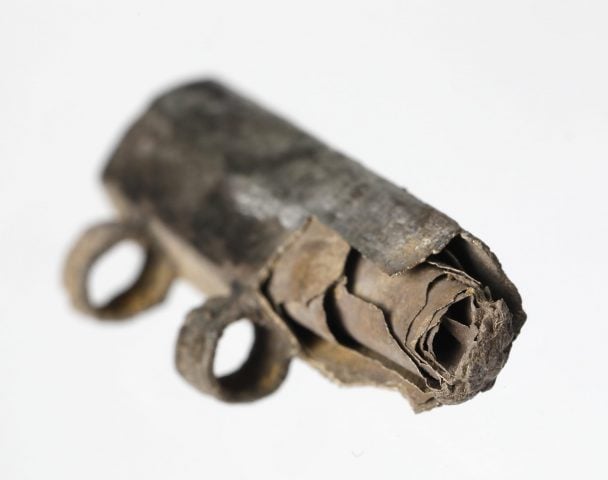Studio Visit
Chinese Artist Yu Hong Paints the Eternal Struggles of Life and Death in Her Beijing Studio
We spoke with the artist as she prepared for her solo show in Venice.
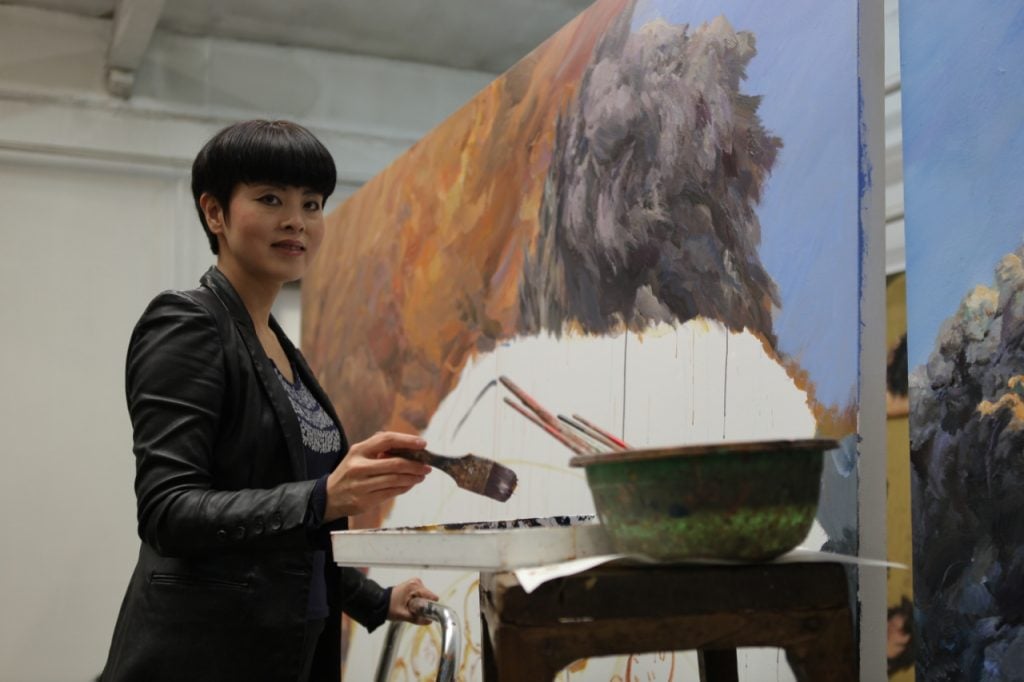
Holding an exhibition in Venice has been a dream come true for Chinese artist Yu Hong (b.1966). As one of the most influential painters in China, she is a frequent visitor to this ancient city of water. Her dream comes true. “Yu Hong: Another One Bites the Dust” is a site-specific installation in the Chiesetta della Misericordia a deconsecrated church in the Cannaregio district of Venice.
Opening to the public on April 20, and coinciding with the 60th Venice Biennale, “Yu Hong: Another One Bites the Dust” presents to a global audience the artist’s most spectacular Surrealist paintings and her philosophy on life and death.
The show features new figurative and narrative paintings that resonate with the architectural and cultural context of the deconsecrated Romanesque-Byzantine church, founded by Augustinian friars in the 10th century. Yu describes the church as highly appropriate in both style and size, saying: “Condensed through the baptism of history, the space possesses a profound sense of time, which seamlessly integrates with the artworks, forming an organic whole.”
When planning the show, Yu says she “wanted to have a dialogue with the religious art there, which essentially conveys contemplation of the ultimate questions of life.” The resulting paintings are phenomenological and immersive, mostly featuring young people and women in twisted postures and expressions of imminent danger or suffered pain. In this cycle of paintings, Yu Hong depicts the arc of the human experience—birth, life, desire, sex, and death, with images drawn from her “personal image archive” built from daily social scrolling as well as her own photography.
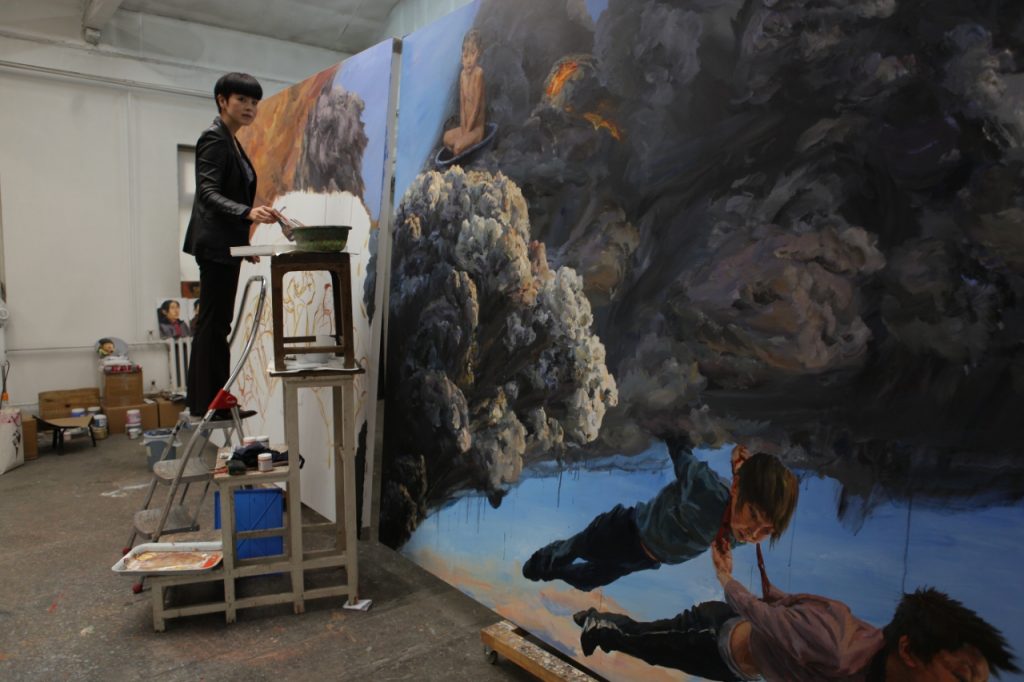
Artist Yu Hong in her studio. Credit: Yu Hong
The exhibition is accompanied by a specially commissioned immersive soundscape by composer Nico Muhly, which premiers on June 6. The project is organized by Alexandra Munroe, Senior Curator at Large, Global Arts, Solomon R. Guggenheim Museum and Foundation, and is presented by the museum’s Asian Art Initiative.
Before the artist departed for Venice, we caught up with her in her Beijing studio, to talk about how she paints her monumental works.
Can you talk about the new work in the Chiesetta della Misericordia. How did you begin and think about this project? Who are the people in the painting?
The polyptych work Walking through Life depicts the human experience from birth to death. Starting with a human being’s birth and separation from the mother’s body, a baby bathing in a tub, which suggests being confined within certain limits after birth. The next scene shows four children doing artistic gymnastics, a subject I’ve painted many times because my daughter took classes on it. Watching these children train was both brutal and beautiful. This brutality is not just on the physical level, it also hints at the discipline of life, which is something most people have to adapt to, to live with this world.
The subsequent panel discusses love, with two lovers lying on rocks barely showing their faces. Then two men lying on the ground as if they were caught committing a crime, followed by several girls who seem to be sex workers—both panels represent the conflict between desire and morality. The following panel features a woman’s body wrapped in cling film, a method some use for sweating during weight loss, which also subtly relates to the depiction of gymnastics as an external constraint affecting people—sometimes not entirely by force.
Then, it’s the elderly, exercising with granite bollards, as if picking a fight with the world, resembling both resistance and anger. After that, people are searching for something, like the constant search for desires in life. The final panel is about death, with the feet of the elderly, children, men, and women on a rack, and the lowest is bound feet, all metaphors for death. This series of panels starts with life and ends with death, with desires in between; together they are about the process of fighting against desire before reaching the end of one’s life.
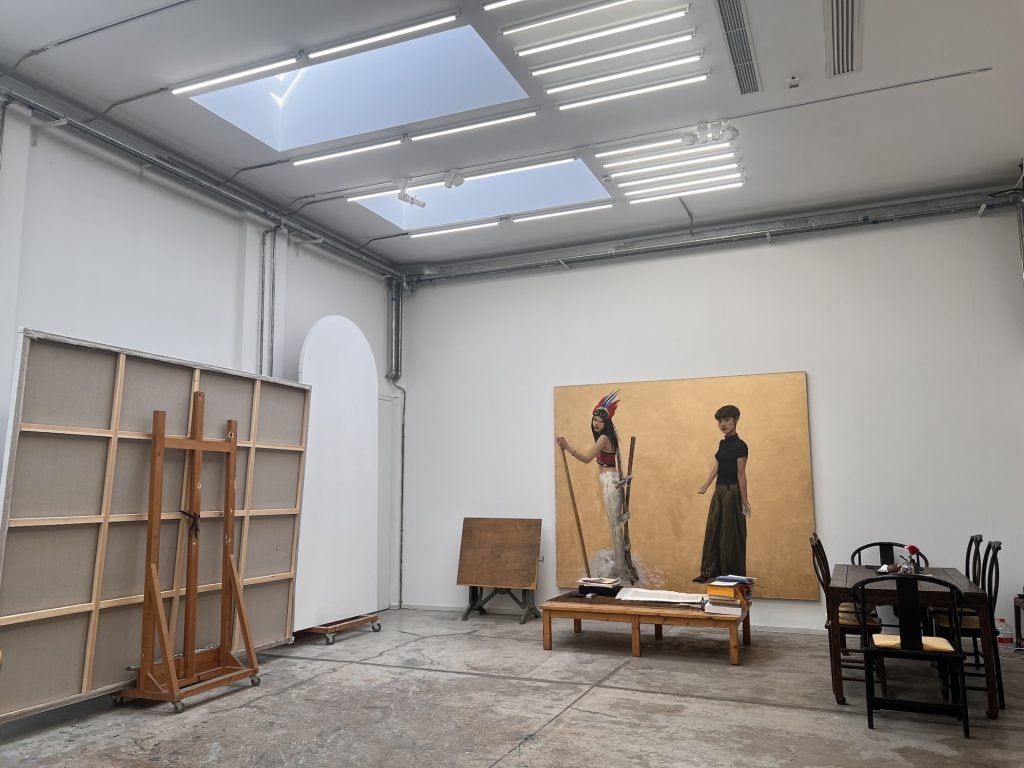
Artist Yu Hong’s studio. Credit: Yu Hong
Describe your studio space in three adjectives.
Quiet, bright, comforting.
Tell us about your studio. Where is it and how did you find it? What made you choose this particular studio over others?
My studio is located in the 798 Art District in Beijing and I’ve been working here for more than 20 years. I chose 798 because it’s close to the Central Academy of Fine Arts (CAFA) and convenient for work. The factory workshops from the 1950s have high ceilings and are suitable for studio spaces. The area was quite run-down at the time, which artists liked. Now, 798 is a bustling spot, and especially crowded on weekends. Fortunately, my studio is on the edge, away from tourists, and still a very quiet space for creation and reflection.
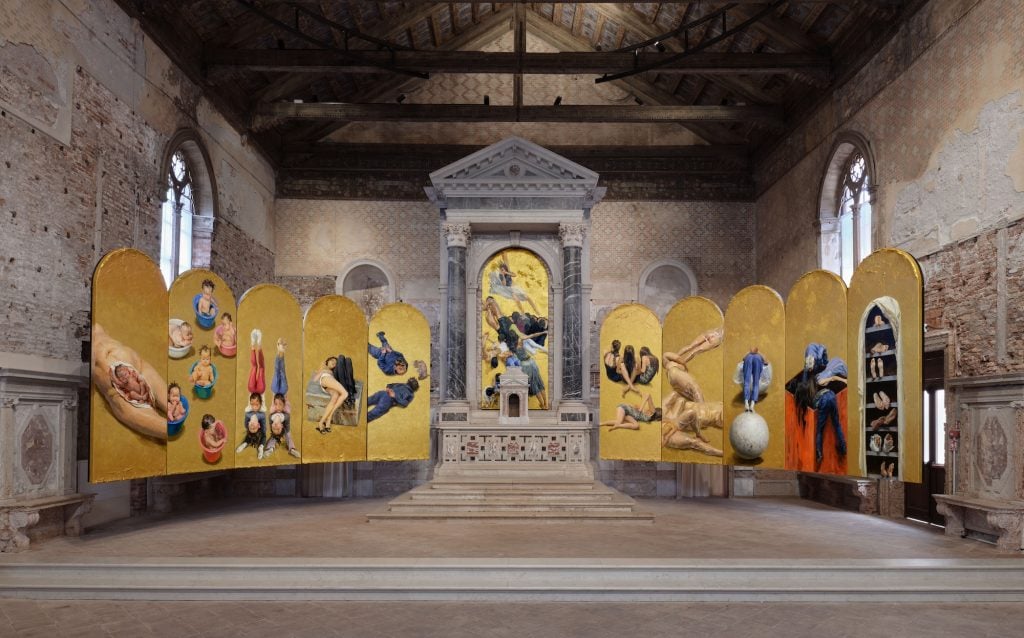
Installation view of
Yu Hong: Another One Bites the Dust, April 20– November 24, 2024. © Yu Hong. Courtesy Lisson Gallery. Photography by George Darrel.
Drawing large paintings often is physically demanding. Do you have any tips or experiences to share?
Painting itself is physically demanding, moving around and up and down all day is a form of exercise. Besides painting, I also do some simple mat exercises at home. Minimizing distractions and trivial thoughts helps maintain my energy.
When you feel stuck while preparing for a show, what do you do to get unstuck?
Creative bottlenecks and stagnation happen every day. Life isn’t always forward-moving, and stagnation can be beneficial, it allows for accumulation and reflection. The only way to overcome it is to keep painting; eventually, you work through it without realizing it.
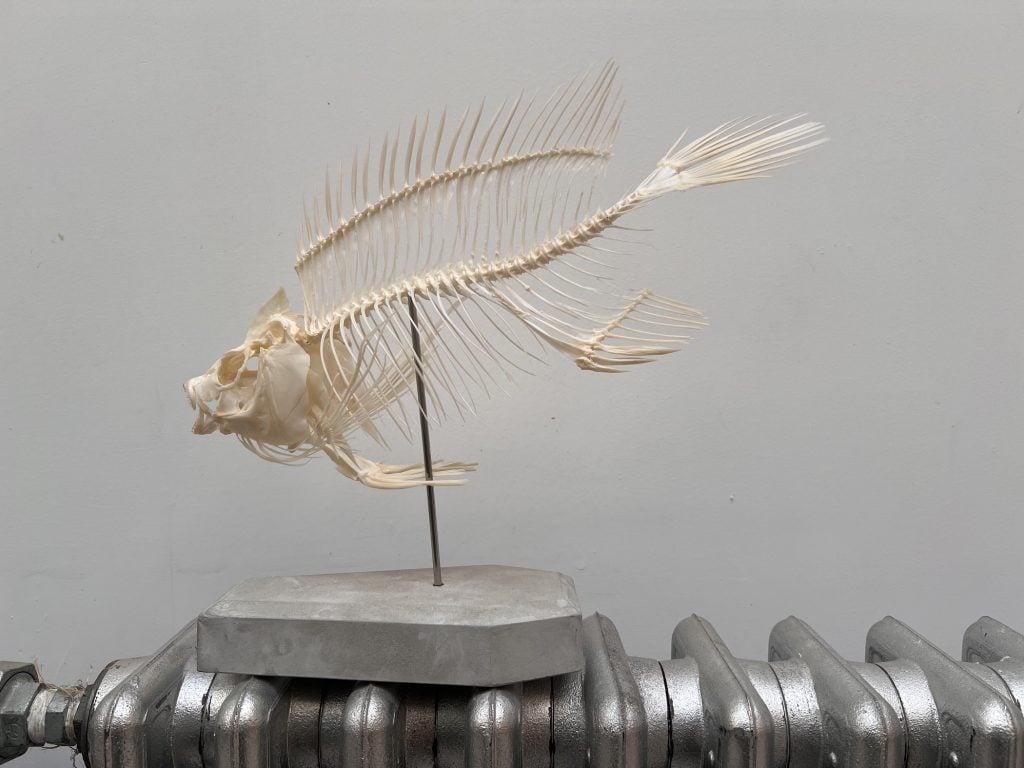
A fish skeleton in Yu Hong’s studio. Credit: Yu Hong
Is there anything in your studio that a visitor might find surprising?
Nothing particularly unusual. There is a fish skeleton, a prop I bought last year for the painting The Old Man and the Sea (2023), and it looks quite nice.
What tool or art supply do you enjoy working with the most, and why? Please send us a snap of it.
I prefer various scrapers because they are the most beautiful tools, but I only have two or three.
What’s the last museum exhibition or gallery show you saw that affected you and why?
A few years ago, I saw an exhibition about unfinished paintings, “Unfinished: Thoughts Left Visible,” at the Met Breuer, spanning from Classical to contemporary art. It was very enlightening; unfinished works are essentially spaces left open, allowing more room for breathing and interpretation.
This year, I look forward to the opportunity to visit “An Epic of Chinese Jade for 10,000 Years,” a special exhibition at the Nanjing Museum. The introduction to the displays looks fantastic, with many national treasures making an appearance.
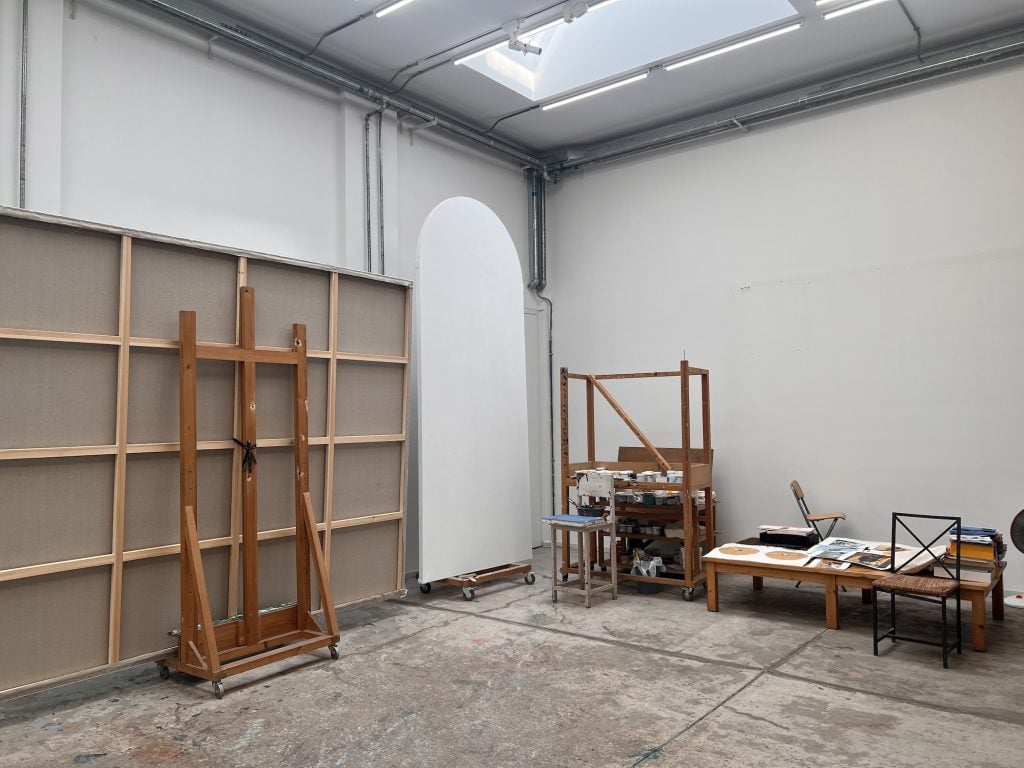
Artist Yu Hong’s studio. Credit: Yu Hong
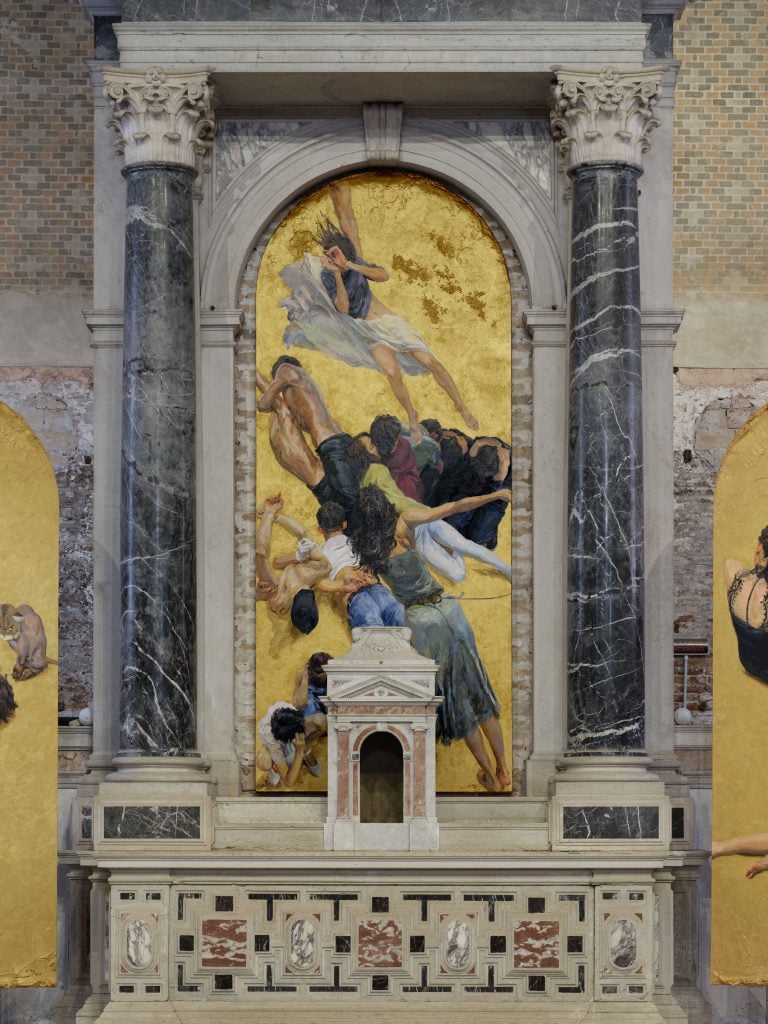
Yu Hong: Another One Bites the Dust, April 20– November 24, 2024. © Yu Hong. Courtesy Lisson Gallery. Photography by George Darrel.




